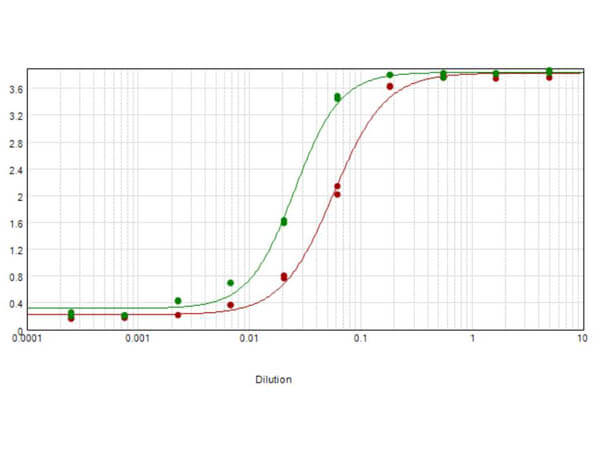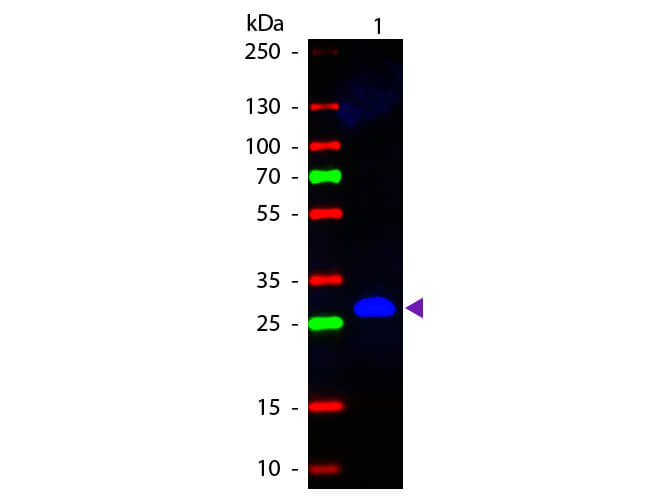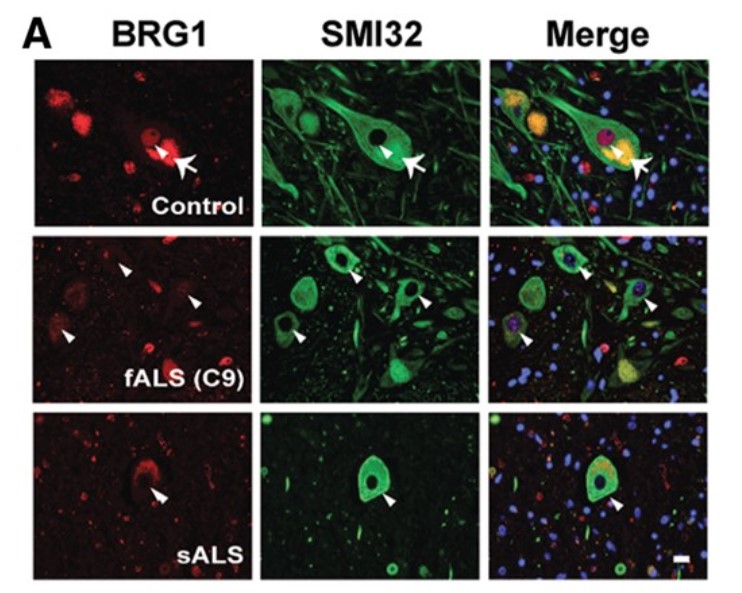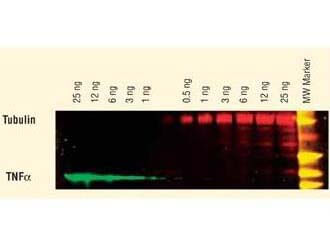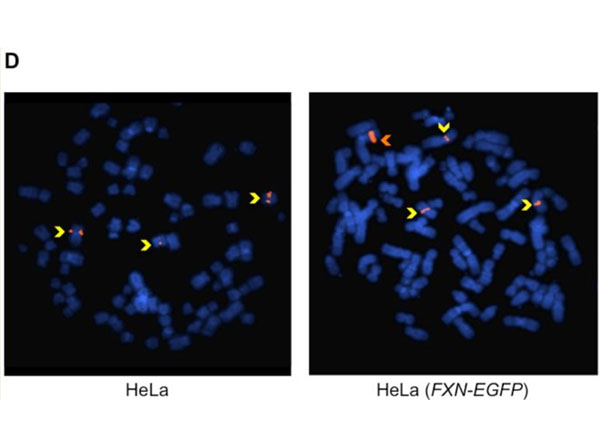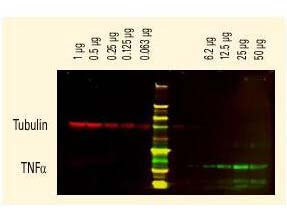Datasheet is currently unavailable. Try again or CONTACT US
Mouse IgG (H&L) Secondary Antibody Biotin Conjugated
Rabbit Polyclonal
2 References
610-4602-0100
610-4602-001
610-4602
100 µg
1 mg
2 mg
Lyophilized
Lyophilized
Lyophilized
WB, ELISA
Mouse
Rabbit
Shipping info:
$50.00 to US & $70.00 to Canada for most products. Final costs are calculated at checkout.
Product Details
Rabbit Anti-Mouse IgG (H&L) Antibody Biotin Conjugated - 610-4602
rabbit anti-Mouse IgG Antibody biotin conjugation, rabbit anti-Mouse IgG biotin conjugated Antibody
Rabbit
IgG (H&L)
Biotin
Polyclonal
IgG
Target Details
Mouse
Mouse IgG whole molecule
Secondary Antibody was prepared from monospecific antiserum by immunoaffinity chromatography using Mouse IgG coupled to agarose beads followed by solid phase adsorption(s) to remove any unwanted reactivities. Assay by immunoelectrophoresis resulted in a single precipitin arc against anti-biotin, anti-Rabbit Serum, Mouse IgG and Mouse Serum.
Application Details
ELISA
WB
- View References
Mouse secondary antibody conjugated to biotin is available in a variety of formats. Anti-Mouse IgG Biotin Antibody has been tested by ELISA and is suitable for western blot, ELISA and immunohistochemistry as well as other antibody based assays requiring lot-to-lot consistency.
Formulation
2.0 mg/mL by UV absorbance at 280 nm
0.02 M Potassium Phosphate, 0.15 M Sodium Chloride, pH 7.2
0.01% (w/v) Sodium Azide
10 mg/mL Bovine Serum Albumin (BSA) - Immunoglobulin and Protease free
1.0 mL
Restore with deionized water (or equivalent)
Shipping & Handling
Ambient
Store secondary antibody at 4° C prior to restoration. For extended storage aliquot antibody and freeze at -20° C or below. Avoid cycles of freezing and thawing. Centrifuge product if not completely clear after standing at room temperature. This product is stable for several weeks at 4° C as an undiluted liquid. Dilute only prior to immediate use.
Expiration date is one (1) year from date of receipt.
Anti-Mouse IgG Biotin Antibody generated in rabbit detects reactivity to Mouse IgG. Secreted as part of the adaptive immune response by plasma B cells, immunoglobulin G constitutes 75% of serum immunoglobulins. Immunoglobulin G binds to viruses, bacteria, as well as fungi and facilitates their destruction or neutralization via agglutination (and thereby immobilizing them), activation of the compliment cascade, and opsonization for phagocytosis. The whole IgG molecule possesses both the F(c) region, recognized by high-affinity Fc receptor proteins, as well as the F(ab) region possessing the epitope-recognition site. Both the Heavy and Light chains of the antibody molecule are present. Secondary Antibodies are available in a variety of formats and conjugate types. When choosing a secondary antibody product, consideration must be given to species and immunoglobulin specificity, conjugate type, fragment and chain specificity, level of cross-reactivity, and host-species source and fragment composition.
Judd LM et al. (2006). STAT3 activation regulates growth, inflammation, and vascularization in a mouse model of gastric tumorigenesis. Gastroenterology.
Applications
WB, IB, PCA
Howlett M et al. (2005). Differential regulation of gastric tumor growth by cytokines that signal exclusively through the coreceptor gp130. Gastroenterology.
Applications
WB, IB, PCA
This product is for research use only and is not intended for therapeutic or diagnostic applications. Please contact a technical service representative for more information. All products of animal origin manufactured by Rockland Immunochemicals are derived from starting materials of North American origin. Collection was performed in United States Department of Agriculture (USDA) inspected facilities and all materials have been inspected and certified to be free of disease and suitable for exportation. All properties listed are typical characteristics and are not specifications. All suggestions and data are offered in good faith but without guarantee as conditions and methods of use of our products are beyond our control. All claims must be made within 30 days following the date of delivery. The prospective user must determine the suitability of our materials before adopting them on a commercial scale. Suggested uses of our products are not recommendations to use our products in violation of any patent or as a license under any patent of Rockland Immunochemicals, Inc. If you require a commercial license to use this material and do not have one, then return this material, unopened to: Rockland Inc., P.O. BOX 5199, Limerick, Pennsylvania, USA.

